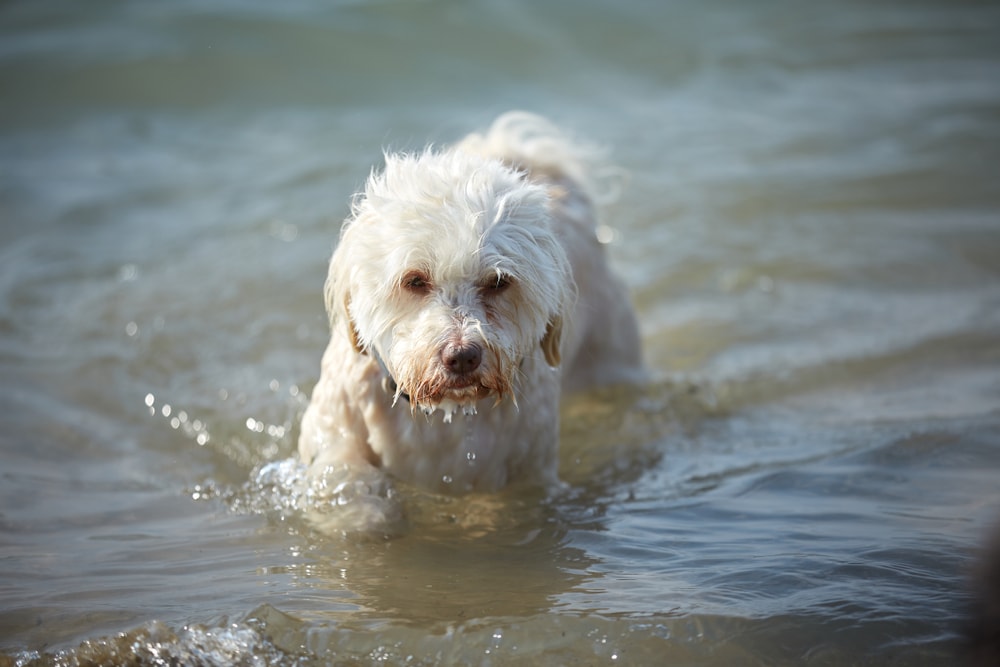Can a Havanese Swim? Breed Characteristics & Facts
Updated on

When we think of dogs playing in the water, a breed like the Labrador Retriever comes first to our minds. That pup was born to swim. It would even seem odd not to see one next to a lake. The Havanese is a different story, however.
Whereas the former sometimes has an aquatic job, the latter probably never worked a day in its life. After all, it’s a small breed selectively bred to look cute and be a lap dog.
Can a Havanese swim? Depending on the individual dog, more than likely, yes. It has all the necessary equipment to get around in the water. However, whether they actually like swimming is a different story.
Havanese History With Water
The Havanese is an older dog breed, despite being a relatively new member of the American Kennel Club (AKC). It joined the ranks in 1996. Evidence suggests the pup is a descendant of the Tenerife dog of the Mediterranean. Spanish and Italian explorers undoubtedly came in contact with the animal. It had to get to Cuba somehow, which means the Havanese had contact with water early in its history.
The same observation applies to its new-found home in the Caribbean Sea. Being near water is probably enough to surmise the pup likely did swim in the past. The difference is a dog like the Labrador Retriever, mentioned earlier, was selectively bred to go in the water, which is proven in its water-repellant double coat and webbed toes. The Havanese lacks these adaptations because it wasn’t bred to be in the water.
Its long, silky hair would probably be a hindrance and a grooming nightmare if it swam regularly. If you want to take your dog to the lake, we recommend getting it a puppy cut to avoid mat and tangles.

Physical Challenges
A Havanese would face challenges in the water because of its size. Rough waters would make swimming difficult for such a small dog. Thankfully, it isn’t a brachycephalic breed. The term describes pups with flat faces and short snouts, such as the Pug, King Cavalier Spaniel, and Boxer. They’re more susceptible to respiratory issues and heatstroke, so they shouldn’t go in the water if it can be avoided.
The Havanese is a relatively healthy breed. Data from the Rainbow Bridge Survey found these pups live about 15 years. The general health of the Havanese suggests it could swim without any physical problems.
Tips for Teaching Your Havanese to Swim
The Havanese has two other qualities that make it a good choice to bring to the beach. It is adaptable to new things, and it loves to play. The stage is set to make a water-loving pup out of your pet. It’s essential to expose your puppy to different experiences, dogs, and people while it’s young. That will ensure it grows up being less fearful.
Canines go through two Fear Impact Periods during their development. One is between 8–12 weeks, and the other during 7–14 months. If you plan to introduce your dog to water during those times, make sure it’s a positive experience. Adverse events can leave a lasting impression, making it difficult, if not impossible, to overcome later in life. Remember that dogs have the emotions of a child 2–2.5 years old, and fear is one of them.
Treats are an excellent motivator to convince your pet to get its feet wet. We suggest making the introduction in a shallow area without any other people or other distractions nearby. Make it fun with some toys. However, don’t force your pup to do anything it doesn’t want to do. You may find it helpful to let an older, experienced dog show your pooch the ropes. Let your pup explore the water on its terms.

Conclusion
The Havanese is a popular breed because it’s so cute and friendly. We can easily see it being a hit at the beach. Rest assured that your pet can swim. However, it’s essential to make its first introduction to water a positive one. Its curiosity may get the better of it. Some playtime and treats will make it a done deal.
Featured Image Credit: Sandra Huber, Shutterstock













